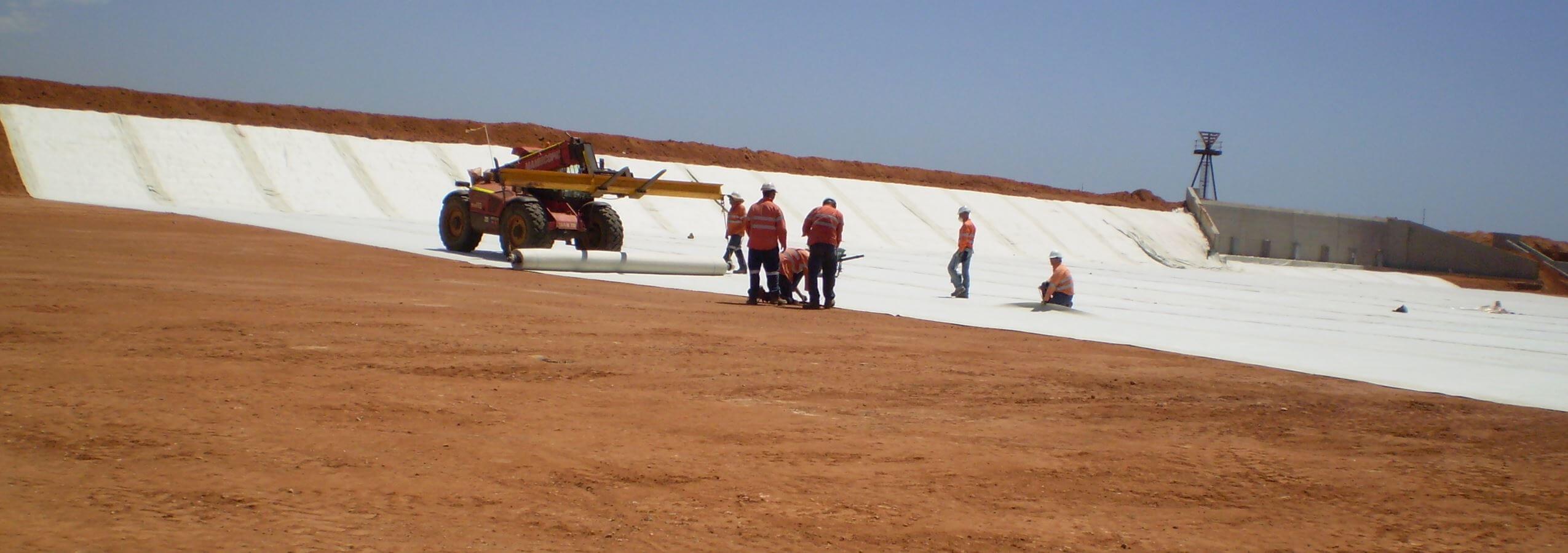With an increasing focus on the whole-of-life impact of building materials on the environment, the European Commission undertook a consultation on microplastic pollution and how to reduce the effect on the environment.
The International Geosynthetics Society (IGS) has recently responded to a European Commission public consultation on ‘Microplastics pollution – measures to reduce its impact on the environment.’
Do geosynthetics contribute to the microplastics problem?
Whilst on the surface it would appear that plastic-based geosynthetic products are a heavy contributor to this issue, geosynthetics are actually in stark contrast to disposable, single-use consumer plastics.
This is because geosynthetics are highly engineered, robust, and durable, making them less prone to degradation. Manufactured with a design life of 100+ years, geosynthetics are made to deliver predictable and reliable performance over a long time frame, providing a valuable function for many, many years.
At the other end of the spectrum, some consumer plastics such as drinking straws, plastic cups, plastic cutlery and carrier bags are very lightweight and easily lost in the environment where they quickly disintegrate into microplastics. Some studies show alarming statistics – in some areas around the world, over 70% of coastal pollution is made up of these single-use plastic products.
Geosynthetics on the other hand are designed to be incredibly robust and are not easily lost in the environment. They typically do not contain harmful chemicals and can be responsibly recycled at the end of their design life.
How geosynthetic use can reduce emissions
Global Synthetics sides with the IGS in their commitment to the UN’s sustainable development goals. Although geosynthetics are a plastic product, they are designed under strict controls to ensure they have minimal impact on the environment once installed. Their stable, rigid construction ensures they remain in place and do not break down over time.
Additionally, they have several benefits to help reduce the overall emissions impact of a project:
Geosynthetics substantially reduce the requirement for fill material, meaning less quarrying and less heavy transport required
Geosynthetics are quite compact and lightweight, meaning more product can be stacked on a single truck, reducing transport emissions
Less aggregate (often tonnes less) equals less need for quarrying, less heavy vehicle transport and reduced diesel emissions from trucking in huge amounts of material.
Less site preparation is required when you choose geogrids too, which means less time, energy and emissions from earthmoving machinery such as excavators and rollers.
The IGS’s studies show a consistent reduction in carbon emissions by using geosynthetics – averaging 65% less CO2 emissions when used in common projects like armouring, landfill covers, retention, embankments and walls.
Geosynthetics and the circular economy
The use of geosynthetics allows project managers to follow circular economy principles and make good use of recycled and reused materials.
Projects using geosynthetics are often paired with construction and demolition waste that is reused as infill, and waste from mining activity can also be used as ballast in the construction of railways. Some geosynthetics themselves are made from post-consumer recycled materials such as plastic bottles and vehicle tyres.
Geosynthetics help maintain a healthy environment
Geosynthetics prevent the leakage of microplastics and toxic chemicals into the environment, via the construction of safe, stable and effective landfill containment structures and leachate ponds. As well as providing appropriate drainage and other functions, geosynthetics offer an effective and highly durable barrier function.
Used in landfills over the past 60 years, geosynthetics have successfully contained waste, protected groundwater and provided sanitation.
Summary
Well designed projects using quality geosynthetics can provide positive environmental benefits, by reducing construction and transport emissions, managing soil erosion and preventing water pollution. They are robust and stable with a long design life, and thereby make little to no impact on the environment when it comes to microplastics.
For more information on the sustainability of geosynthetics or to find out how to reduce the carbon footprint of your next project, contact the engineering team at Global Synthetics.

